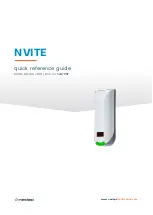
Chapter 2
Configuration and Installation
© National Instruments Corporation
2-11
AT-MIO-16 User Manual
Table 2-9. Configurations for Input Range and Input Polarity
Input Polarity Jumper
Settings
Input Range
Jumper Settings
Bipolar
(factory setting)
W4
U
B
ADC Mode
-10 to +10 V (20 V range)
(factory setting)
W1
20 V
10 V
ADC Range
-5 to +5 V (10 V range)
W1
20 V
10 V
ADC Range
Unipolar
W4
U
B
ADC Mode
0 to +10 V (10 V range)
W1
20 V
10 V
ADC Range
Sign-extension circuitry at the ADC FIFO output adds four most significant bits (MSBs), bits 15
through 12, to the 12-bit FIFO output (bits 11 through 0) to produce a 16-bit result. The sign-
extension circuitry is software programmable to generate either straight binary numbers or two's
complement numbers. In straight binary mode, bits 15 through 12 are always zero and provide a
range of 0 to 4,095. In two's complement mode, the MSB of the 12-bit ADC result, bit 11, is
inverted and extended to bits 15 through 12, providing a range of -2,048 to +2,047.
Considerations for Selecting Input Ranges.
Input polarity/range selection depends on the expected input range of the incoming signal. A
large input range can accommodate a large signal variation but sacrifices voltage resolution.
Choosing a smaller input range increases voltage resolution but may cause the input signal to go
out of range. For best results, match the input range as closely as possible to the expected range
of the input signal. For example, if the input signal will never become negative (below 0 V), a
unipolar input is best. However, if the signal does become negative, inaccurate readings will
occur.
The AT-MIO-16 software-programmable gain increases its overall flexibility by matching input
signal ranges to those the AT-MIO-16 ADC accommodates. The AT-MIO-16H board has gains
of 1, 2, 4, and 8 and is suited for high-level signals near the range of the ADC. The
AT-MIO-16L board is designed to measure low-level signals and has gains of 1, 10, 100,
and 500. With the proper gain setting, you can use the full resolution of the ADC to measure the
input signal. Table 2-10 shows the overall input range and precision according to the input range
















































